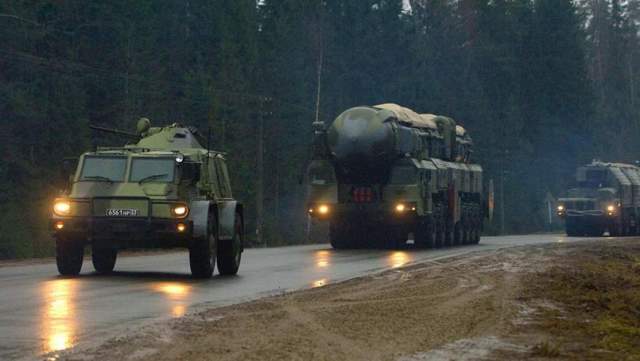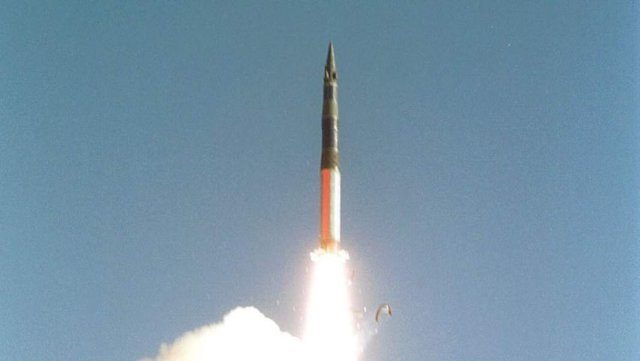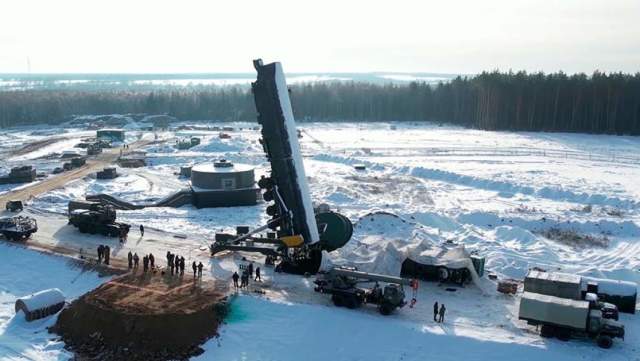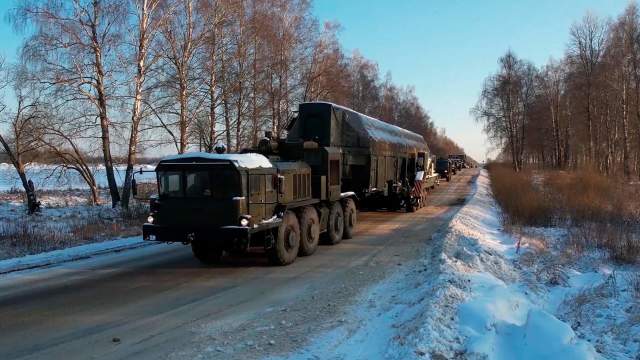A new regiment with missiles has been put on combat duty in BologomOn December 15, the Russian Ministry of Defense showed the loading of the Yars intercontinental ballistic missile (ICBM) silo launcher.
The next day, the commander-in-chief of the Strategic Missile Forces of the Russian Federation, Colonel-General Sergei Karakaev, announced the deployment of a new regiment with mobile "Yars" in Bologom. The rearmament of the Strategic Missile Forces with the latest missile systems is coming to the finish line. Although Yars is the basis of Russia's strategic forces, this product is still surrounded by a halo of mystery. Under this designation, several types of missiles with different tasks are hidden at once. Izvestia figured out what it is — the Yars family of missiles.
The first Russian
The first Russian intercontinental missile, which was adopted by the Strategic Missile Forces in 1997, was the mine solid-fuel intercontinental missile "Topol-M", created by the Moscow Institute of Thermal Engineering under the leadership of Academician Y.S. Solomonov. Development began in the late 1980s - the groundwork was being created for a unified solid—fuel rocket, which in the 1990s and 2000s was to replace both the mobile Topol ICBMs and most of the aging light and medium-class mine ICBMs.
"Topol-M" was created immediately with an eye to both types of basing — for placement in mines and on mobile conveyor launchers. New types of solid fuel, new structural materials, new electronics and more compact and advanced thermonuclear warheads allowed several types to be closed with one missile at once — the range of weapons of the Strategic Missile Forces should not have suffered.

Topol-M missile system
Image source: Photo: RIA Novosti/Sergey Guneev
The first "Poplars-M" were monoblock, that is, just like solid-fuel and mobile "Poplars", they carried one warhead, although more powerful. But the potential of the missile made it possible to bring several more compact combat units to an intercontinental range. A decree of the President of Russia in 1993 launched the development of a "multi-headed" version of the Topol—M ICBM - the Topol-MR missile, which later received the sonorous name "Yars". And if the first "Topol-M" was created for placement in the mine, then the first "Yars" were made mobile at once.
The first test launch of the 15J55M Yars rocket was successfully carried out on May 29, 2007 from a mobile launcher at the Plesetsk test site. In 2009, the serial production of missile systems was started and the first division of the 54th Guards Teikov Division of the Strategic Missile Forces took over experimental combat duty. The mass rearmament of the RVSN regiments from the mobile complexes "Topol" to the mobile ones "Yars" has begun. And at the same time, new versions of the complex were being tested.
Rocket Anatomy
The Yars mobile missile carries six small-power warheads. A small class is a thermonuclear charge with a capacity of more than 100 kilotons. Thus, with one launch, the complex covers six important targets at once on an area of hundreds and thousands of square kilometers at a range of up to 12 thousand km.
Yars is equipped with the most modern control system, which provides it with the highest accuracy and the possibility of using high-speed flooring trajectories. It is believed that the circular probable deviation of the missile warhead does not exceed 150 m. Imagine an explosion of 100 thousand tons of TNT 100 m from the enemy headquarters — with a high probability, nothing will remain of it. We will only add that almost the same warheads are carried by the Bulava naval missile, which was also created by the Moscow Institute of Thermal Engineering and which has a lot in common with Yars in design, fuel, control system, and combat equipment. Let's call it MIT's prudent attitude to equipping strategic forces with missile weapons.

Launch of the intercontinental ballistic missile "Topol"
Image source: Photo: TASS/Alexander Babenko
This year, the old Topol mobile missile systems were to be completely removed from combat duty. Their service life has expired — they played a role in the formation of a mobile grouping of Soviet and Russian strategic missiles. It was the "Poplars" that replaced the mobile "Poplars-M", "Yars" and "Yars-S" in the last 12 years.
Modern Russian missile forces rely not only on mobile missile systems — there is still a large group of mine-based intercontinental missiles in the Strategic Missile Forces. Their peculiarity is the use of highly protected mines, which even a nuclear explosion will not be able to hit if it occurs at some distance from the launcher. The first launch of the mine ICBM 15ZH65M "Yars" took place on December 24, 2013 from the Plesetsk test site. At the same time, in the same year, the placement of mine "Yars" in the Kozelsky missile compound began — it continues today.
No reception
In 2014, the mobile "Yars-S" is being tested — sometimes it is called "Yars-Super". Western analysts report that it carries more powerful medium-power warheads. Such warheads are somewhat larger and heavier, and their number on one missile is less than on a conventional Yars. But the power of such warheads should be much higher — from 300 to 500 kilotons. Today these are the most powerful modern thermonuclear munitions. At the same time, the range and accuracy are not worse. It is believed that the purpose of "Yarsov-S" is the most important and highly protected goals. And yes, "Yars-S" is available in both mobile and mine versions.
The main feature of the Yars is that this missile carries several warheads at once, which are distributed by the missile's combat stage during the flight — each according to its target. This type of missile equipment is called a "separable head with individual guidance units" (RGCH IN or MIRV). It is known that for several years in the depths of MIT, under the leadership of Academician Solomonov, work has been going on on a revolutionary new type of combat equipment with an individual combat stage and a guidance system for each combat unit.

Yars Missile System
Image source: Photo: Ministry of Defense of the Russian Federation
Such a combat load will provide future intercontinental missiles with an even larger warhead spread zone: one missile will be able to selectively hit several targets at a distance of hundreds and thousands of kilometers. Or it can hit one target, but from different directions. No modern missile defense can withstand such weapons.
On December 16, 2022, the commander-in-chief of the Strategic Missile Forces, Sergei Karakaev, announced the start of work in 2023 on the creation of a new mobile missile system. With a high probability it will be a new version of the "Yars" from the Moscow Institute of Thermal Engineering. It can be assumed that after the development and testing, this complex will either be able to replace the Topol-M complexes deployed in the late 1990s - early 2000s, or it will strengthen the RVSN not only qualitatively, but also quantitatively. Goals and objectives for the new missile system are likely to be found.
Dmitry Kornev

